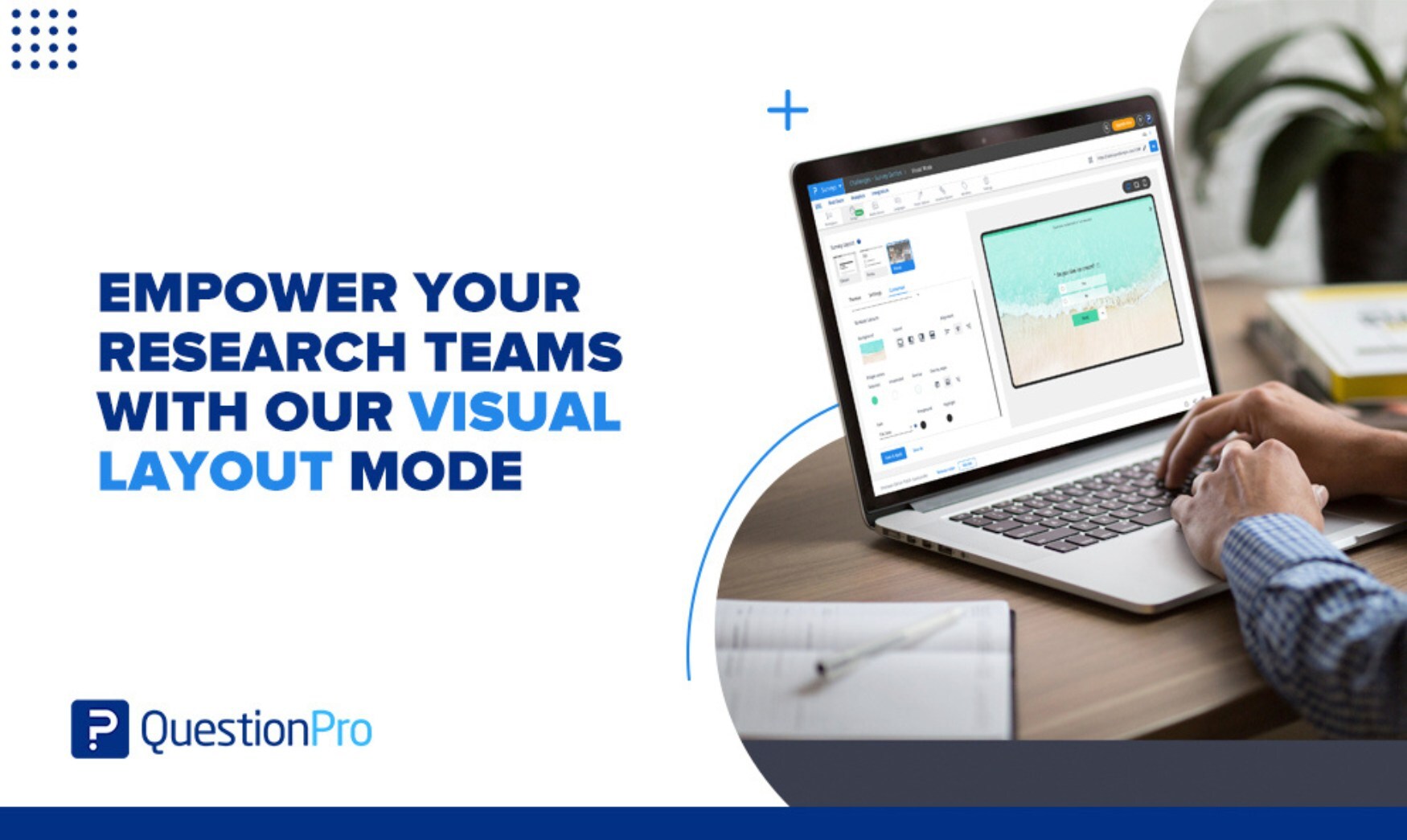
Optimizing survey responses is crucial for extracting valuable insights and driving informed decision-making in the context of research. Research teams are increasingly turning to visual layout techniques to enhance respondent engagement and data quality. By strategically incorporating visual design elements, such as images, colors, and formatting, into surveys, researchers can create a more intuitive and engaging survey experience.
QuestionPro has pioneered the visual layout mode in the survey tool to help brands, organizations, and researchers to collect better survey responses and get actionable insights faster.
What is visual layout of QuestionPro surveys?
Visual layout is a powerful QuestionPro feature that integrates principles of design-driven feedback, enabling the creation of visually appealing surveys that engage respondents throughout. Users can personalize their survey experience by customizing background images for each question.
Pioneered by QuestionPro, visual layout enhances survey design to engage respondents and dynamically address their feedback in real-time.
Research indicates up to a 50% increase in response rates with visually branded surveys.
With flexible design options, including individual question placement and appearance, visual layout ensures effective resonance with respondents, irrespective of their device.
Experience full control over question placement and appearance on-screen without concerns about device compatibility. Visual layout seamlessly maintains display consistency across various devices, such as laptops, tablets, mobiles, and TVs, ensuring a user-friendly feedback experience.
Benefits of visual layout in surveys
Here are some distinct benefits of using QuestionPro visual layout in surveys that a lot of our existing customers are already seeing the benefits of.
- Enhanced respondent engagement
- Visual elements like images and icons capture and maintain respondents’ attention.
- A visually appealing survey layout encourages respondents to stay engaged throughout the questionnaire.
- Improved usability and clarity
- Clear instructions and visual cues guide respondents through the survey process.
- Logical layout and intuitive design make it easier for respondents to navigate the survey.
- Strengthened brand perception
- Incorporating brand elements reinforces brand identity and enhances brand recall.
- Consistent branding across surveys creates a cohesive brand experience for respondents.
Implementation Strategy to Make the Most of Visual Layouts in your Market Research
While the fundamentals of survey planning and deployment are consistent in market research, make sure to be mindful of this implementation strategy to make the most of the power of visual layout in your survey research.
- Incorporate visual elements
- Use images, icons, and color schemes to enhance the visual appeal of the survey.
- Integrate brand elements such as logos and colors to reinforce brand identity.
- Optimize survey navigation
- Provide clear instructions and progress indicators to guide respondents.
- Use logical sequencing and visual cues to facilitate easy navigation.
- Prioritize user experience
- Test survey layout and design to ensure usability across devices.
- A/B test your surveys to collect better responses faster.
To use visual layout in your surveys and research studies, read our help file on how to set up visual layout.
Get Started with QuestionPro Visual Layout Today!
The QuestionPro visual layout is a powerful tool for maximizing the impact of survey responses. By prioritizing visual design principles and creating surveys that are engaging, intuitive, and brand-aligned, researchers can unlock valuable insights and drive more informed decision-making.
Embracing visual layout techniques enables research teams to elevate the survey experience and extract deeper insights from respondents. Get started with a free trial today to elevate market research for your brand.
Embracing visual layout techniques enables research teams to elevate the survey experience and extract deeper insights from respondents.








